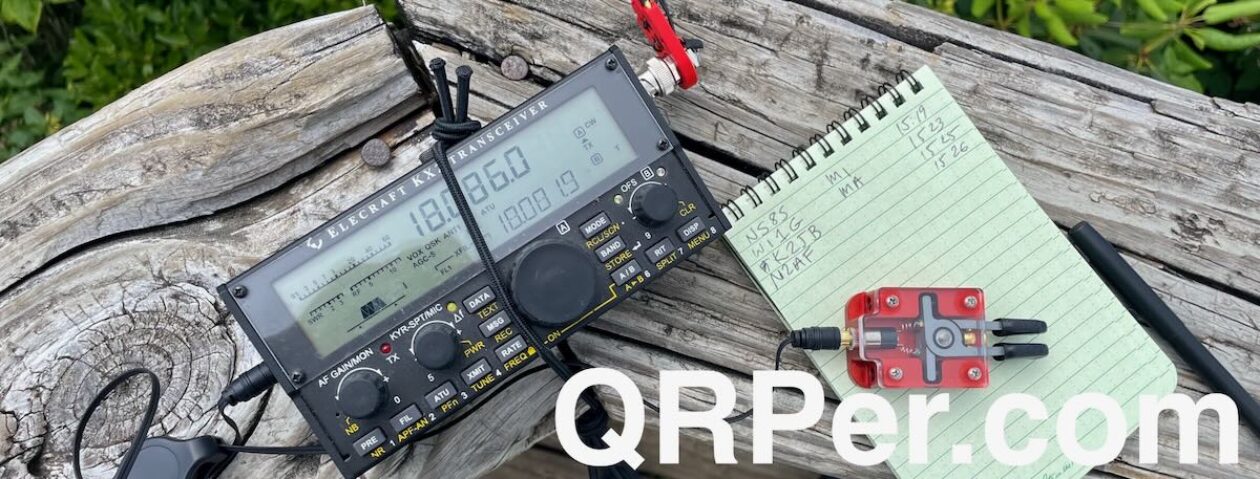After 126 Days, A Long-Awaited Unboxing: The KH1 Arrives!
by Emily (NI1Q)
If there was one thing being in a physical rehab facility for 4 months taught me it was friends and families were a comfort. They brought encouragement, broke the boredom and were helpful in bringing hope when I wasn’t sure if I would be walking again. I was able to have my DMR handheld and checked into nets and talked with friends, but I really missed being on HF.
Although I own an IC-705 and a QRP Labs QMX, managing them in a room would have been difficult. I really love the 705, and can manage the QMX, but the 705 is not the kind of rig you can put in a bedside table drawer; the QMX with an EFHW + batteries becomes about as large and difficult to deploy. Especially in bed.
It was with this mindset that I watched in interest Tom’s initial videos of the Elecraft KH1. I initially saw it as something akin to the QMX, and I had some reservations about the key. As I watched several of Tom’s exploits, my mindset began to change. On January 29, 2024, I placed an order for KH1 Edgewood package. I would soon (I hoped) become an Elecraft owner, part of what sometimes seems to be a cult, and other times seem to be the most loyal fanbase in ham radio.
I initially calculated I would get delivery sometime in April, just in time for my birthday. As that time passed I talked to Elecraft and they opined that I would have it in time for Dayton. A week before, it wasn’t going to happen, and I packed heavy to take the IC-705 with me.
And, then, May 30th, my wait was over. An email arrived: The KH1 was on the way!
Boxes Arrives: I can’t contain myself…
On June 1st, I was out playing fetch with Zoe and saw the postal truck coming down the street, and I rushed over to the curb to meet him. As he clicked his phone to certify delivery I asked “It’s from Watsonville CA, right?” He smiled; “You must have been waiting for this one.” “126 days for sure.” I rushed into the house with my package quicker than Ralphie Parker running out into the snow with a Red Ryder BB-gun on Christmas day.
I had previously ordered the right angle antenna adapter, so together I had two boxes to unwrap. The KH1 was packed well enough the box puffed up with what I assumed was bubble-wrap.
 Carefully cutting the packing tape confirmed my assumption, and I was greeted by a very nice and unexpected colour manual that confirmed I had now become an Elecraft owner for the first time.
Carefully cutting the packing tape confirmed my assumption, and I was greeted by a very nice and unexpected colour manual that confirmed I had now become an Elecraft owner for the first time.
I thumbed through the manual and made a mental note of the sections I’d need for a quick “getting started” activity. Time set – check. Antenna selection – check. Charging – check. On-off switch – check.
I was ready (and eager) to go.
Pieces, Lots of Pieces.
 Even though it looks like a tidy group of four things, there were multiple layers. First out was the Edgewood case. It’s a nice case but with only one extra pocket. I would later learn it wasn’t really enough. The case was well padded, so for now it would be where the radio lived. Continue reading NI1Q’s Long-Awaited Elecraft KH1: Worth the Wait?
Even though it looks like a tidy group of four things, there were multiple layers. First out was the Edgewood case. It’s a nice case but with only one extra pocket. I would later learn it wasn’t really enough. The case was well padded, so for now it would be where the radio lived. Continue reading NI1Q’s Long-Awaited Elecraft KH1: Worth the Wait?







































